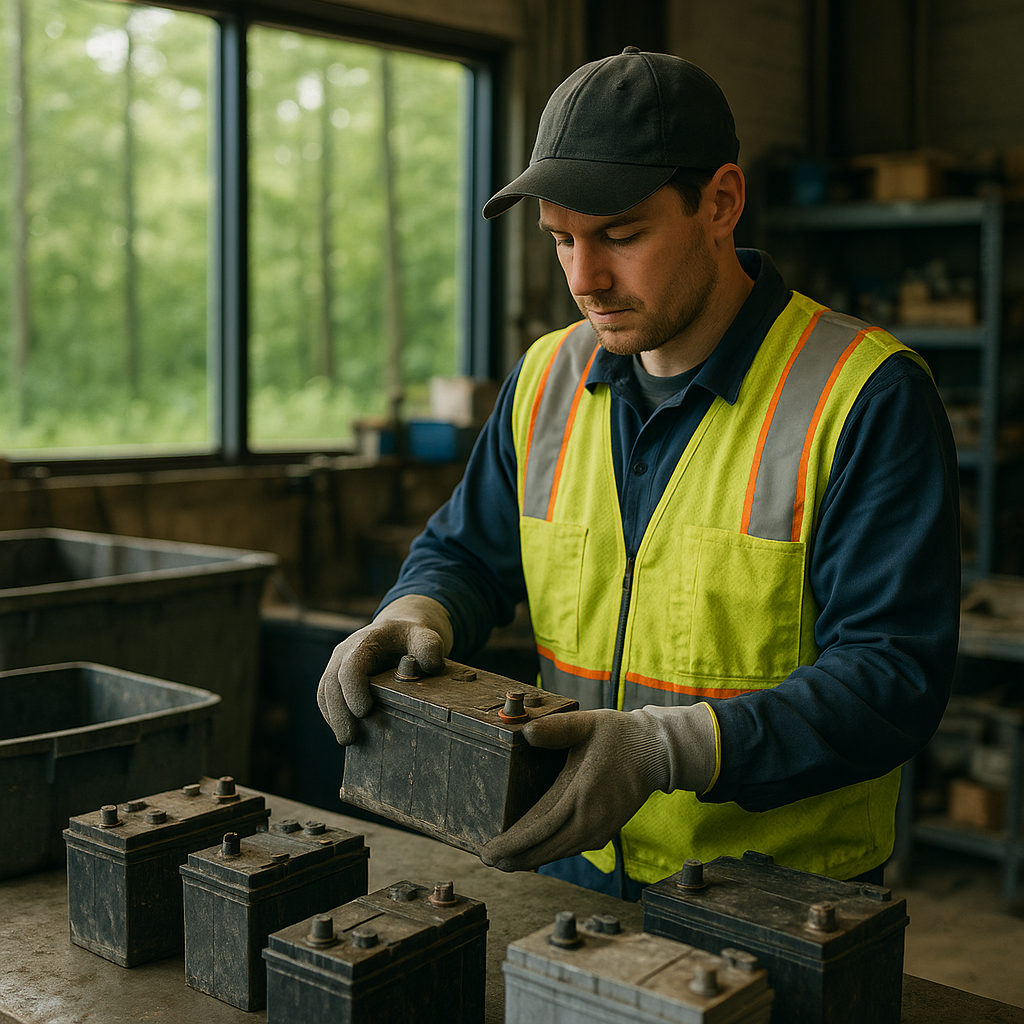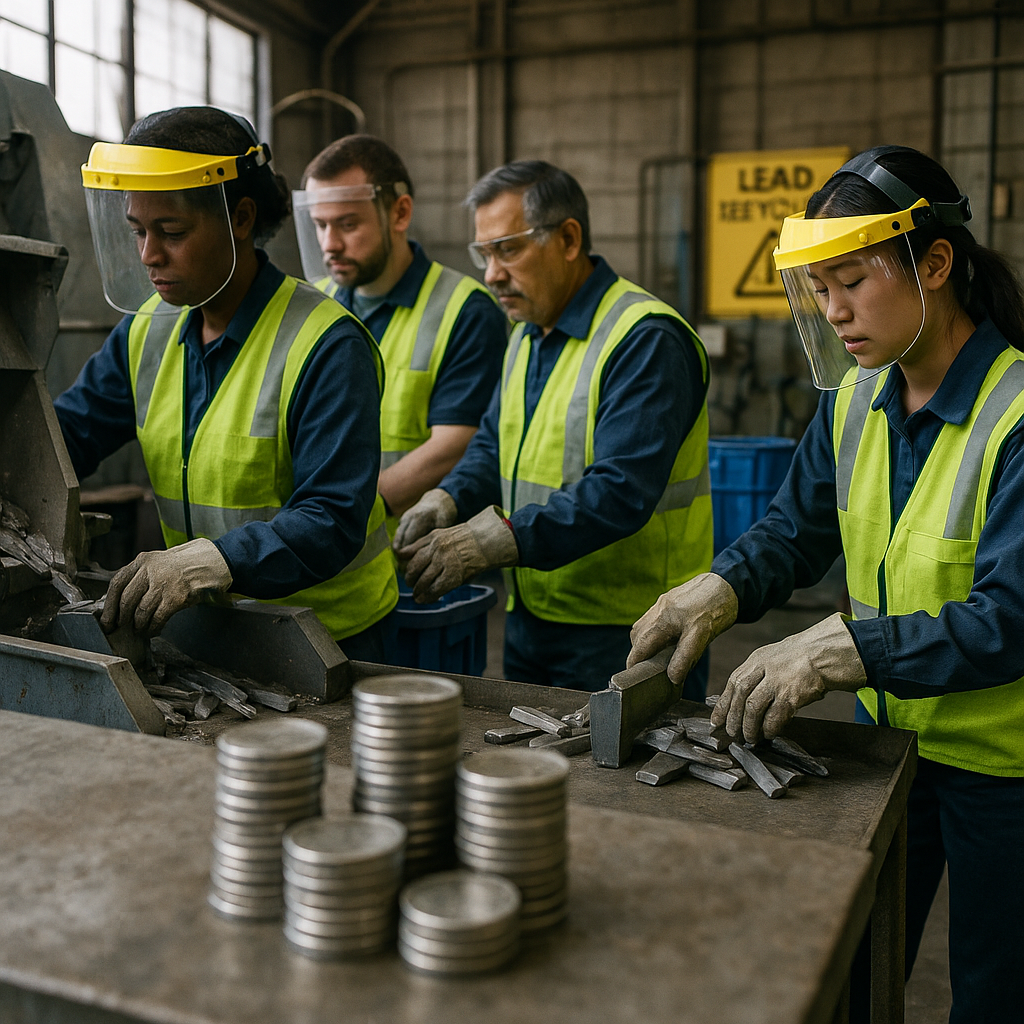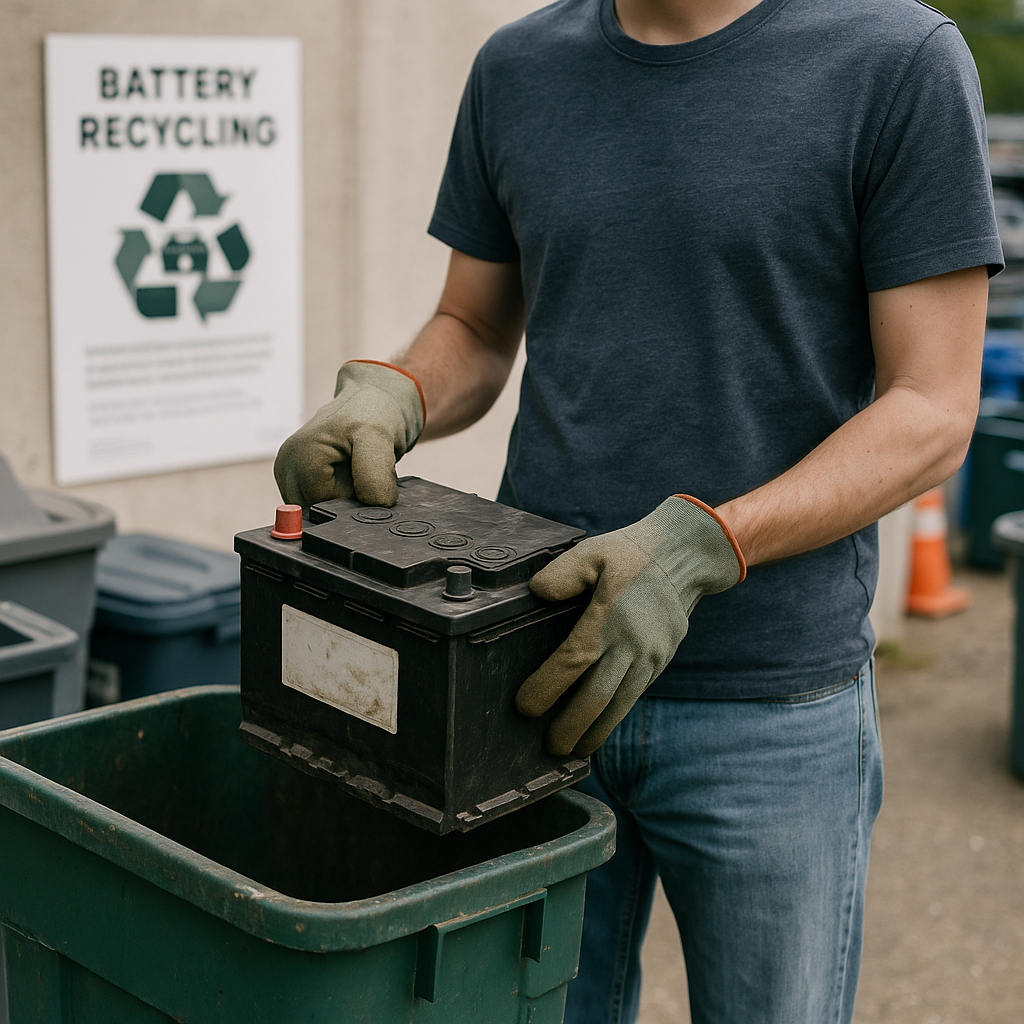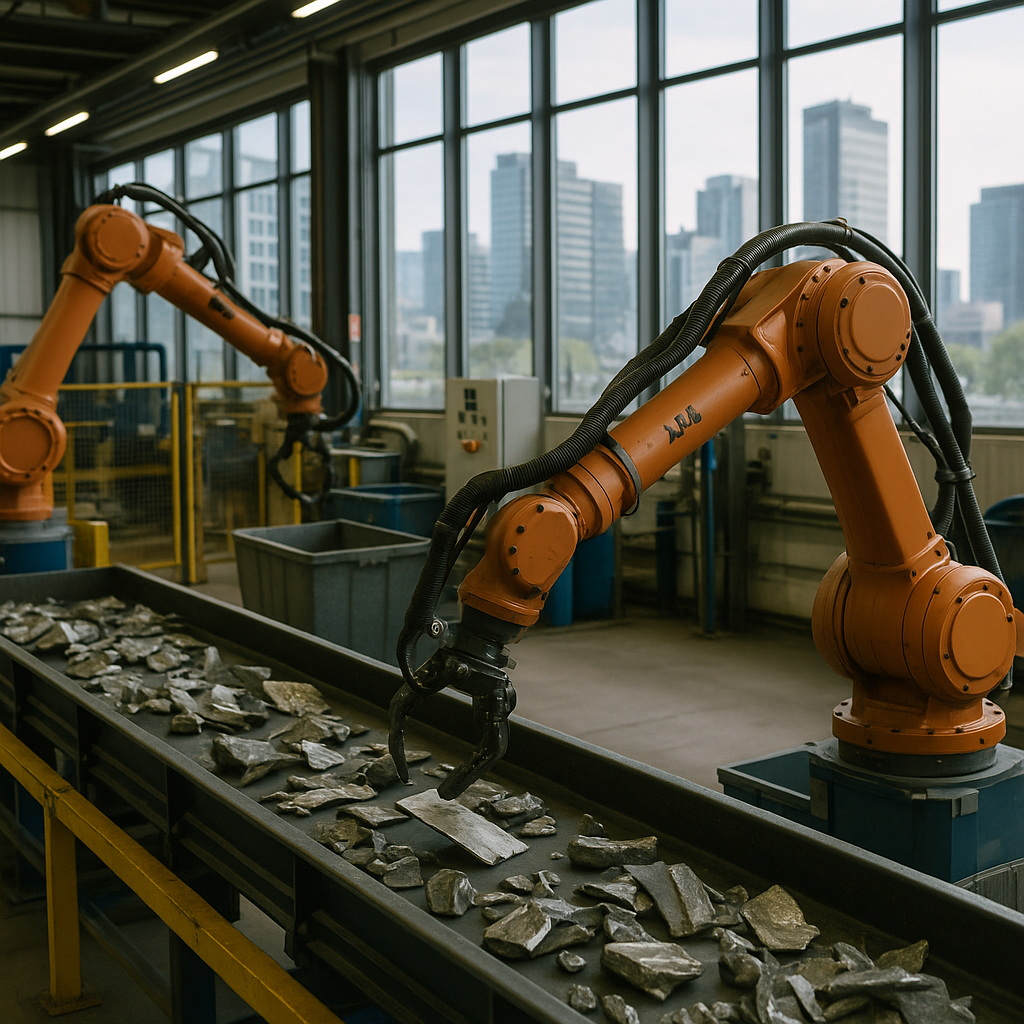5901 Botham Jean Blvd, Dallas, TX 75215
What Is Lead Recycling and Why Is It Important?
May 28, 2025Lead recycling transforms hazardous waste into valuable resources by collecting, processing, and reusing lead from used products. The process primarily focuses on lead-acid batteries found in vehicles, backup power systems, and industrial equipment.
The importance of lead recycling cannot be overstated. Every recycled battery prevents toxic lead and acid from contaminating soil and groundwater. This protection is critical since improper disposal threatens ecosystems and human health with potential neurological damage and developmental problems.
Beyond environmental protection, lead recycling delivers significant economic benefits. The industry creates jobs throughout the collection, processing, and manufacturing chain. This circular approach uses substantially less energy than extracting new lead ore while extending the lifespan of existing lead resources.
What are the Environmental Benefits of Lead Recycling?

Lead recycling prevents harmful contamination of soil and water systems. When lead-acid batteries are improperly disposed of, toxic lead can leach into groundwater and soil, posing serious risks to ecosystems and potentially entering the food chain.
Recycling not only prevents contamination but also diverts hazardous materials from landfills, minimizing exposure risks to wildlife and communities. Neutralizing sulfuric acid during recycling further reduces environmental damage.
Energy Conservation
Lead recycling requires significantly less energy than primary lead production. Processing recycled lead uses far less power than extracting and refining raw lead from ores.
This reduction in energy consumption directly translates to lower carbon emissions. The decreased need for fossil fuels in recycling helps mitigate climate change impacts while providing quality material for manufacturing.
Modern recycling facilities incorporate energy-efficient technologies to maximize resource recovery while minimizing energy use.
Natural Resource Preservation
By reusing existing lead, recycling reduces the demand for virgin lead ore mining, which causes habitat destruction and landscape alteration.
Lead is a finite resource, and recycling helps extend its availability. The circular economy approach ensures this valuable material remains in use rather than becoming waste.
The recycling process recovers not just lead but also other components like plastic casings that can be repurposed, enhancing the environmental benefits of recycling programs.
Pollution Reduction
Lead recycling minimizes pollutants associated with primary lead production. Smelting new lead ore produces more emissions than processing recycled lead.
Strict regulations ensure minimal environmental impact from recycling facilities, which use filtration and scrubbing systems to capture pollutants before they affect air quality.
Recycling centers prevent unregulated disposal, systematically managing materials that could become hazards if mishandled.
Through these benefits, lead recycling shows how proper waste management significantly contributes to environmental protection. The combination of contamination prevention, energy savings, and resource preservation makes lead recycling essential for sustainable practices.
What Economic Opportunities Does Lead Recycling Create?

Lead recycling creates substantial job opportunities across various sectors. The industry employs workers in collection centers, sorting facilities, and transportation services that form the initial stage of the recycling process. These local jobs contribute directly to community development.
The processing phase requires skilled technicians and operators for crushing, smelting, and refining operations. Recycling lead uses about 80% less energy than extracting virgin lead from ore, leading to cost savings that stimulate economic activity.
Manufacturing is another significant employment sector within the lead recycling value chain. Workers in this area produce new batteries, construction materials, and other lead-containing products from recycled materials, often providing stable employment and competitive wages.
Local Economic Development
Lead recycling facilities act as economic anchors in their communities. They generate tax revenue, support auxiliary businesses, and create indirect employment opportunities. Small businesses often emerge to support the recycling infrastructure, from equipment maintenance to safety training services.
The economic impact extends beyond the recycling facilities. Businesses using recycled lead in their production benefit from lower material costs, enhancing competitiveness and allowing for expansion and additional hiring.
Communities with established recycling programs often experience reduced waste management costs. By diverting lead materials from landfills, local governments save on disposal expenses and can redirect funds to other essential services.
Innovation and Sustainable Growth
The lead recycling industry drives innovation in processing technologies and sustainable manufacturing. Companies invest in research and development to improve recovery rates, reduce energy consumption, and minimize environmental impacts, creating high-skilled technical and engineering positions.
Entrepreneurial opportunities abound in the recycling sector. New ventures develop specialized collection methods, more efficient processing techniques, or novel applications for recycled lead. The focus on sustainability encourages startups to enter the circular economy marketplace.
| Economic Benefit | Description |
|---|---|
| Job Creation | The lead recycling industry creates jobs throughout the collection, processing, and manufacturing chain. |
| Cost Savings | Recycling is less expensive than primary production, saving costs for industries reliant on lead. |
| Energy Efficiency | Recycling consumes significantly less energy compared to producing new materials from raw resources. |
| Resource Efficiency | Recycling completes the resource use loop, reducing waste output and maximizing resource utilization. |
| Economic Opportunities | Lead recycling generates a value chain that sustains livelihoods and advances socioeconomic development globally. |
Lead recycling contributes significantly to resource efficiency by completing the resource use loop. When lead materials reenter the manufacturing cycle, they reduce waste output and maximize resource utilization. This circular approach creates a more sustainable economic structure that preserves natural resources while generating economic value.
The global nature of lead recycling creates international trade opportunities. Countries with advanced recycling capabilities export their expertise, technology, and sometimes recycled materials to regions developing their recycling infrastructure. This international exchange stimulates economic growth across borders.
How Can Individuals Support Lead Recycling Efforts?

Lead recycling thrives on individual participation. Each person can make a significant impact through simple yet effective actions. Proper disposal is key to these efforts.
Proper Disposal of Lead-Containing Items
Avoid throwing lead-containing products in regular trash, as this can allow toxic lead to leach into soil and groundwater.
Instead, take used lead-acid batteries to designated collection points. Many auto parts stores and battery retailers accept these items when you purchase replacements. Municipal recycling centers and scrap yards also serve as appropriate collection sites.
For other lead items like wheel weights, plumbing materials, or electronics containing lead components, research local facilities that accept these specific materials. Many communities host special collection events for hazardous materials.
Raising Awareness
Share knowledge about lead recycling with family, friends, and colleagues. Simple conversations can amplify your impact by encouraging others to adopt proper disposal practices.
Use social media to spread information about local recycling options and the environmental benefits of lead recycling. Consider organizing a neighborhood cleanup day focused on collecting and properly disposing of hazardous materials.
Educational efforts are particularly important in communities with limited recycling infrastructure. Helping others understand the environmental and health risks of improper lead disposal builds community support for recycling programs.
Supporting Recycled Products
Support the recycling industry by purchasing products made from recycled materials. This creates market demand that sustains the industry.
When buying batteries or other lead-containing products, look for options that incorporate recycled content. Many manufacturers now advertise their use of recycled materials.
Research companies before making purchases to identify those with strong environmental commitments. Businesses that prioritize responsible waste management practices deserve consumer support.
| Disposal Option | Process | Environmental Impact |
|---|---|---|
| Recycling | Collecting and reusing lead from used products, primarily lead-acid batteries | Prevents soil and water contamination, reduces energy consumption, and lowers carbon emissions |
| Landfilling | Discarding lead products in landfills | Risk of lead leaching into soil and groundwater, causing contamination |
| Incineration | Burning lead-containing waste | Potential release of lead particles into the air, contributing to air pollution |
Taking Action in Your Community
Participate in or organize local recycling initiatives. Community cleanup events provide opportunities to collect and properly dispose of hazardous materials like lead.
Contact local government representatives to advocate for improved recycling infrastructure. Many communities lack adequate facilities for handling lead waste, and citizen advocacy can drive positive change.
Support regulatory efforts that strengthen lead recycling requirements. Environmental policies ensure that manufacturers and businesses take responsibility for the proper disposal of lead products.
Conclusion: The Future of Lead Recycling

Lead recycling is a cornerstone of sustainable resource management. The process conserves valuable resources by reducing the need for environmentally damaging mining operations and cuts energy consumption by up to 80% compared to extracting virgin lead. This efficiency leads to substantial reductions in greenhouse gas emissions and a smaller environmental footprint.
The economic advantages of lead recycling go beyond resource conservation. The industry creates jobs, stimulates local economies, and offers a cost-effective alternative to virgin lead production. As regulations and industry standards evolve, lead recycling processes become more efficient and environmentally friendly, driving innovation in waste management practices. For your recycling needs, contact Okon Recycling at 214-717-4083.
